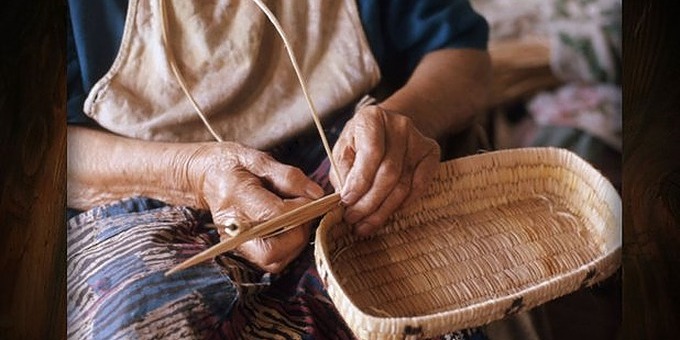
Climate & Indigenous Ways of Knowing & Being
Since time immemorial, Indigenous peoples have been living sustainably, protecting and taking care of the land and waters. And yet, they are disproportionately harmed by the climate crisis, often hit the hardest when climate disasters strike. Their communities are also disproportionately impacted by resource extraction projects such as pipelines and fracking wells. Additionally, Indigenous communities have been historically excluded from decision-making processes and had their voices and knowledges silenced.
In light of all this, a commitment to reconciliation must be at the centre of any plan to address equity in climate action. Learning about Indigenous ways of knowing and being helps to disrupt and question dominant, taken-for-granted worldviews and perspectives. For centuries, Indigenous peoples have been at the frontlines of land and water protection. Their expertise, knowledge, and experience is invaluable, and should be central to climate solutions.
Consider the following questions when planning your climate actions:
- Are we involving Indigenous peoples in the development of our climate action plan?
- How might Indigenous perspectives and knowledges (e.g., seven-generations thinking, an 'all my relations' worldview, land and water protection, etc.) be incorporated into the planning of this action?
- Does this action have any direct or indirect impacts on Indigenous communities or community members? Are these impacts positive or negative?
- Can Indigenous communities and community members specifically benefit from this action? If so, how?
- Is it possible to include Indigenous voices and experiences in the planning process? If so, how does it serve their needs and priorities?
Strategic Themes:
As a way of understanding how the Truth and Reconciliation Commission Calls to Action and community input fit together, the Urban Indigenous Strategy developed by the City of Hamilton uses the strategic themes of Land, People and Spirit. These themes were chosen as a way to take a municipal action plan and connect it to an Indigenous understanding of the relationships humans have to land, to each other, and spirituality.
Land
The Land theme is about acknowledging and respecting the spiritual, mental, physical and emotional connections that Indigenous people have to land. This connection extends into Indigenous knowledge, governance, language, and relationships with non-Indigenous organizations. It recognizes that the first relationships between Indigenous and non-Indigenous peoples in Canada were focused on the sharing, use, and stewardship of land.
Spirit
The Spirit theme embodies how Indigenous contributions and experiences, including the Indian residential school system, are honoured and commemorated. This may involve exploring archives to shed light on untold histories and how Indigenous people and histories are visibly represented in the City.
People
The People theme embodies how Indigenous and non-Indigenous peoples build mutually respectful relationships in everyday settings. This can include how services are provided and are accessible to Indigenous people, housing, employment, and support for Indigenous people in the workplace.
Consider:
How might your municipality engage with the three themes of Land, Spirit, and People to integrate Indigenous knowledges and worldviews into your climate action plan?
Additional Resources:
- In partnership with Indigenous Climate Action, the City of Toronto collaborated on a workshop to discuss the next steps in supporting, promoting, and connecting with urban Indigenous climate action. The report emphasizes the centrality of relationship building over time, and the essential nature of land-based programs for urban Indigenous communities.
City of Hamilton Urban Indigenous Strategy & Implementation Report:
- The Urban Indigenous Strategy (UIS) was developed and informed through various events including community conversations, youth art projects and the UIS survey. These guiding principles are presented as a foundation on which the City of Hamilton will carry out the actions of the Urban Indigenous Strategy. It also guides the City during future projects and programs that have an impact on Indigenous residents in Hamilton.
Indigenous Justice for Environmental Movements:
- This resource provides guidance from an Indigenous perspective on what and how environmental efforts may be able to support Indigenous reconciliation by providing a series of questions that can help identify synergies and opportunities to act on them.